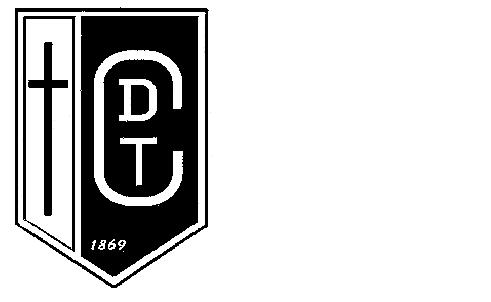thompson veterinary clinic 440 chippewa avenue ~ manistique, mi 49854 ~ 906-341-2813 g. hoholik, dvm ~ t. gustafson, dvm ~ j. columbus, dvm
Thompson Veterinary Clinic
440 Chippewa Avenue ~ Manistique, MI 49854 ~ 906-341-2813
G. Hoholik, DVM ~ T. Gustafson, DVM ~ J. Columbus, DVM ~ H. Way, DVM ~
R. Coyer, DVM
Spay and neuter information
There are many factors to consider in deciding whether to spay or
neuter your pet, or to use them for breeding. First, there is a
serious pet overpopulation problem and any offspring your pet produces
can only add to that problem. There are also many health and
behavioral benefits to spaying and neutering, which we will outline
for you. Also, if breeding is something you are considering see the
section at the end of this handout for several things you should be
aware of. In general, if you are not planning to use your pet for
breeding, you should have them spayed or neutered. The appropriate
time to spay or neuter is usually around 6 months, your veterinarian
will let you know if they recommend something different for your pet.
There are many myths about spaying and neutering, you may have heard
some of them.
*
Females should have a heat cycle before spaying. Not true except
in rare cases (explained in spay section below)
*
Females should have a litter before spaying. There is no medical
or psychological reason for a pet to have a litter before spaying.
*
Watching the dog or cat give birth is the best way for the
children to experience the miracle of life. There are other, more
responsible resources available (try looking on the internet) to
achieve this goal.
*
Spaying or neutering will make my pet fat. Too many calories and
not enough exercise will make your pet fat. After spay or neuter,
your pet’s metabolism will change and they will need only about
65% of the calories they did before surgery. If you adjust their
diet accordingly and do not feed free-choice (when food is
available all the time) then your pet will not get fat.
*
My pet will not feel whole or will miss out on something if spayed
or neutered. The drive to reproduce is very powerful, but they do
not miss it when it is gone. Sexual intercourse for animals is an
instinct, not a voluntary pleasurable activity. Animals also have
no emotional drive to be parents. It is less stressful for a pet
to be spayed or neutered than to be intact and have the drive to
reproduce and not be allowed to follow that instinct. They also
have no concept of how it “feels” to be male or female. Gender
roles do not have the same meaning for pets.
*
I can’t afford to spay/neuter. The diseases and problems and
offspring caused by not spaying or neutering are far more
expensive. If you think you can’t afford the surgery, you
definitely can’t afford not to. See your local humane organization
for help with the surgery cost. In most cases, they would rather
help pay for the surgery than try to place your pet’s unwanted
litter into good homes. In addition, spayed and neutered animals
don’t need as much food, as mentioned above. That’s less you have
to buy and saves you money!
*
Spaying or neutering will change my pet’s personality. Not true.
Your pet is who they are. The surgery may change some of their
behavior, especially if done after sexual maturity, but behavior
is not the same as personality.
Spay
Spaying is the surgical removal of the female’s ovaries and uterus,
which also eliminates the hormones these organs produce. Health
benefits of spaying include eliminating the risk of ovarian and
uterine cancers, and a drastic decrease in risk for mammary tumors.
The most benefit occurs if the spay is done before the first heat
cycle, which usually occurs between 6 and 10 months of age. Spaying
completely eliminates the risk of pyometra, which is a
life-threatening infection of the uterus which occurs in up to 20% of
unspayed females that never have a litter. Spaying also eliminates the
risk of false pregnancy, a disorder where the female has the hormones
of pregnancy present and they may produce milk and “mother” inanimate
objects. Spaying slightly increases the risk of future urinary
incontinence in some breeds, discuss with your veterinarian if your
pet is one of them.
When dogs are in heat they will often have bloody vaginal discharge
and make a mess in the house. The drive to reproduce is very intense
and preventing breeding is more difficult than you would think. Males
can detect a female in heat a mile away and may camp out by your house
and wait. Cats in heat typically vocalize frequently (often described
as “yowling”)and rub on everything in sight, causing many owners to
request an “emergency” spay or worse, to let the cat outside so they
don’t have to listen to it, where she will promptly get pregnant. Heat
behaviors usually last about 3 weeks and happen 2-3 times a year in
the dog and can occur up to once a month in the cat. Heats can also be
“silent”, especially in dogs, resulting in an unwanted pregnancy when
no one knew they were supposed to be keeping her away from intact
males. Intact females also tend to have more aggression and moodiness
with people (especially children!) and other pets than spayed females.
Neuter
Neutering means surgical removal of the testicles. The scrotum is
usually left in place unless it is very pendulous. Neutering
eliminates the risk of testicular cancer, which is especially common
in males in which one or both testicles have not descended into the
scrotum (called ‘cryptorchidism’). Neutering decreses the risk of
non-cancerous prostate problems, anal cancers, and hernias. The
biggest benefits of neutering are probably the behavioral ones. It
reduces escaping and roaming behavior by 90% when they are not driven
by finding females in heat. Consequently, the risk of being hit by a
car or other trauma from fighting with other animals or being shot for
being in someone else’s yard in pursuit of females is also drastically
reduced. Territorial behavior, urine marking behavior, and aggressive
behavior toward other animals and people are drastically reduced,
especially if they are neutered young before these behaviors have a
chance become habit. Housetraining is made easier by taking away the
urge to mark. In fact, some males become impossible to housetrain if
you wait too long to neuter.
Breeding
If you are still considering breeding, here is some food for thought.
You should wait until your pet is 2 years of age to breed. You should
have an annual CERF eye certification and all breed specific health
clearances performed – check with your veterinarian and national breed
club. A Brucella canis test should be performed one month in advance
of breeding and a complete physical examination performed by a
veterinarian prior to breeding. Also ask yourself the following
questions:
*
Will your pet contribute excellent health, temperament, working
ability, or conformity to the breed standard?
*
Do you understand that spaying and neutering has health and
behavioral benefits that you are giving up by keeping your pet
intact?
*
Are you aware of any and all health and temperament problems in
your pet’s pedigree?
*
Are you willing to search for the best breeding match for your
pet, even if it means traveling out of state?
*
Do you have carefully screened buyers and deposits for all the
puppies or kittens you may produce?
*
Do you have money set aside in case the dam or the offspring need
emergency care, such as a cesarean section?
*
Can you or another responsible adult be present 24 hours a day for
the first 3 weeks in case hand feeding is required?
*
Have you read about what to prepare for and expect for breeding,
pregnancy, birth, and care of newborn puppies and kittens?
*
Are you willing to keep and properly socialize all offspring until
at least 8 weeks of age (or longer if a suitable home has not been
found)?
*
Are you willing to have proper deworming, first vaccines, and a
health check by a veterinarian on all offspring prior to going to
a new home?
*
Are you willing to take back offspring at any time in their lives
that they may no longer be wanted?
*
Are you willing to serve as a lifetime resource for buyers of your
pet’s offspring?
3
 M EDICATION ERRORINCIDENT FORM FOR DOMICILIARY CARE TO BE
M EDICATION ERRORINCIDENT FORM FOR DOMICILIARY CARE TO BE RECHAZO DE LA OFERTA PRESENTACIÓN DE PAZ Y
RECHAZO DE LA OFERTA PRESENTACIÓN DE PAZ Y FACULTYSTAFF DINING MEMBERSHIP SIGN UP FORM NAME TELEPHONE NUMBER
FACULTYSTAFF DINING MEMBERSHIP SIGN UP FORM NAME TELEPHONE NUMBER A THE WRITING CENTER REALCITATION™ HANDOUTS PA INTEGRATING SOURCES
A THE WRITING CENTER REALCITATION™ HANDOUTS PA INTEGRATING SOURCES COLEGIO PRESBITERIANO DAVID TRUMBULL HISTORIA Y CIENCIAS SOCIALES TERCERO
COLEGIO PRESBITERIANO DAVID TRUMBULL HISTORIA Y CIENCIAS SOCIALES TERCERO SCOALA GIMNAZIALA COMUNA FLORESTI INSPECTORATUL ŞCOLAR JUDEŢEAN PRAHOVA COMUNA
SCOALA GIMNAZIALA COMUNA FLORESTI INSPECTORATUL ŞCOLAR JUDEŢEAN PRAHOVA COMUNA